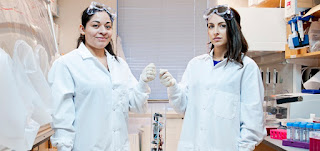Today, tens of thousands of Russians flooded the
streets to protest against the tyrant. They were not afraid of the virus. They
were not afraid of Putin. Viruses come and go. But Putins of the world can rule
for fifty years and ruin your entire life. Russians finally realized the despot
was a much greater threat than covid. The Putin pandemic has damaged the nation
for over two decades with no end in sight.
In some cities, temperatures were -40 or lower.
Through snowstorms and treacherous ice, people walked for hours, braving hard-hitting
batons and incapacitating tasers. In all, 4096 people and at least one dog were
arrested by riot police picking up arbitrary targets. Historians noted Moscow
and St Petersburg had not seen such a high number of cops and barriers since World
War II. Young people said on live TV their desire for freedom was greater than
their fear.
*****
Vladimir Putin has remained Soviet, with no software
updates. He controls the State television completely. But the young generation
watches internet, not TV. The number of people who watched the two-hour film
about Putin’s palatial corruption is approaching the entire Russian population.
In his early days, Putin at least pretended to
respect the law. He swapped presidency for four years with Medvedev to pretend constitutionality.
Now he doesn’t bother any more. In the middle of the pandemic, he came out of
his bunker and moved enough of his autocratic switches to extend his rule till
2036.
Russian people even forgave his attempts to kill
former Russian spies in London, because he called them traitors. But poison an
opponent who is so worthless that Putin has never pronounced his name in public?
Earlier, political brutality was restricted to deny Navalny an electoral
candidacy. Trying to kill the man with a super-lethal banned substance was
already a tipping point.
*****
Should the world be interested in what is Russia’s
domestic affair? Yes. Russia has more nuclear weapons than any other nation. Putin
now has only anti-Western paranoia to justify his rule to the gullible
Russians. Trump was a madman with his finger on the nuclear button. However, America
has enough checks and balances. The American people and media are the most
powerful check on any dictator. Russia has no checks and balances. The
parliament, judiciary, army, state media are all in Putin’s pocket. A desperate
Putin is far more dangerous for the west than a desperate Trump.
Only people can bring Putin down, and their revolution
has started this week.
*****
Some Russians say they don’t see Navalny as a president.
Of course, when you have a dictator in power for 22 years, it is difficult to
imagine anybody else as a president. Alexey Navalny, with his extraordinary
courage and organizational leadership has the potential, but that is not the
point. It is about bringing democracy to this largest nation with millions of simple,
good- natured Russians. Navalny is an anti-corruption campaigner.
Protesting Russians, particularly the young ones,
showed freedom is more important for them. Even if Navalny becomes a president,
removing corruption would be difficult. Corruption is a function of poverty and
culture. America is also a corrupt country; the scale and method may be different.
Young Russians understand that freedom of spirit and fearlessness
of mind are the core necessities of civilized life. That is why Navalny risked entering
Russian jail and a probable assassination, rather than a comfortable life in
exile.
*****
Can Putin become even more ruthless, attempt a Russian
Tiananmen Square-type suppression and crush the protests? It’s increasingly
difficult. Because he shares his loot with his oligarch friends. Those who must
kill ordinary Russians at the dictator’s orders are not rich. They are uniformed
and armed, but poor. The next step is for them to join the protesters. In a
city called Chita, cops refused to do their duty, allowing the protestors to
protest.
The best way out for Putin is to negotiate an amnesty
and life-long immunity. He may not be able to spend the rest of his life in his
palace, but surely, he can settle in a place more livable than a Siberian
colony.
Ravi







